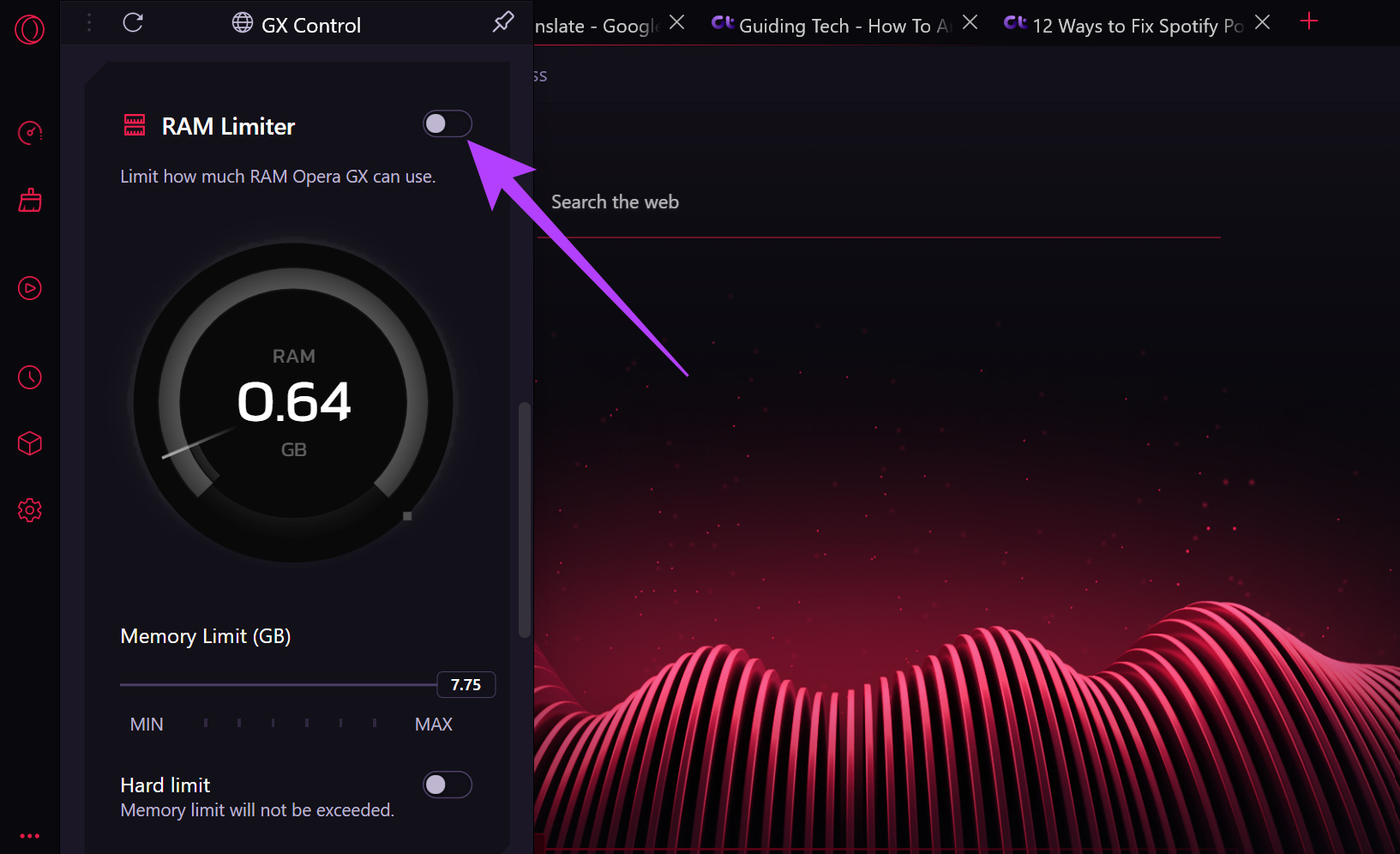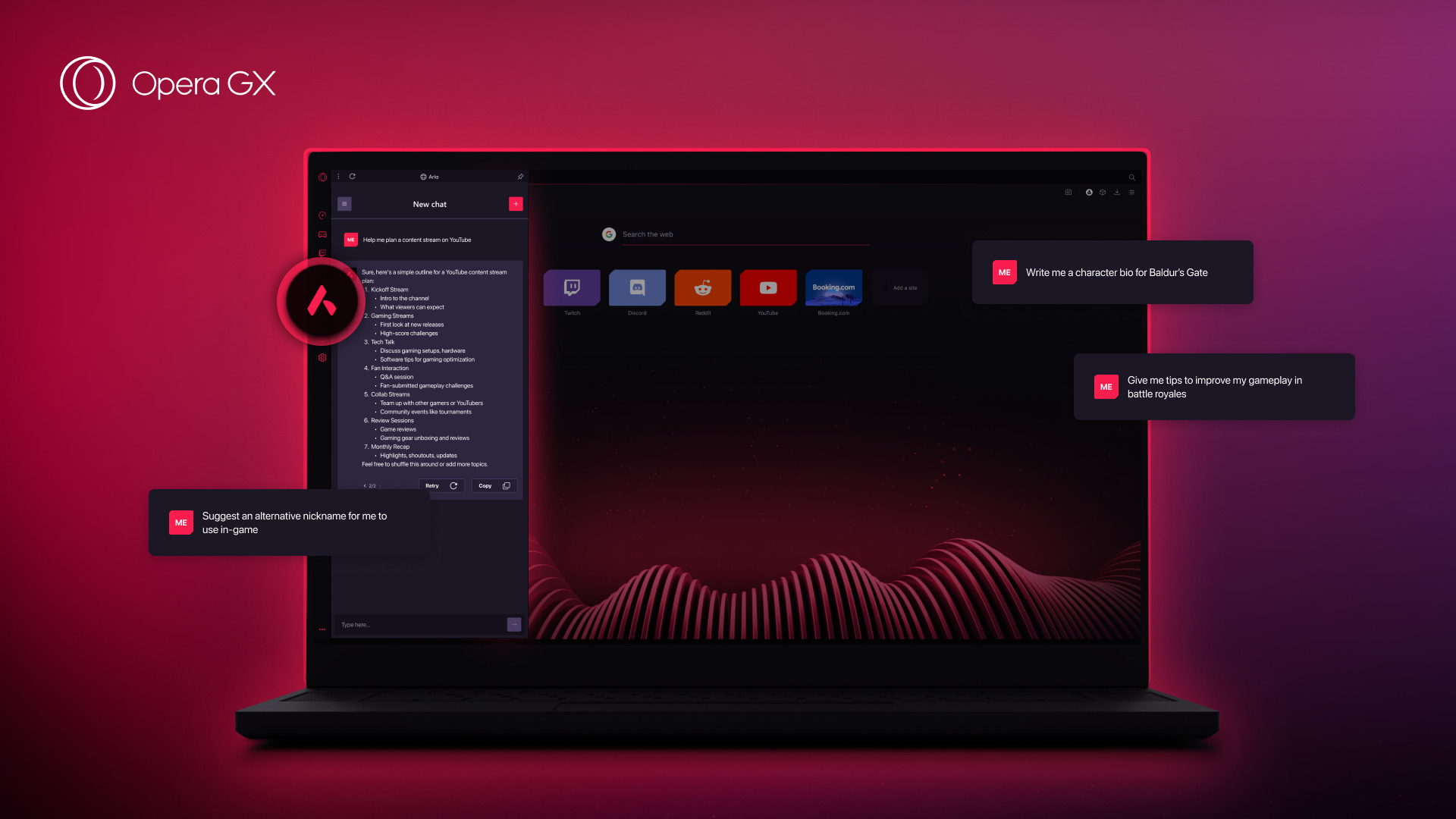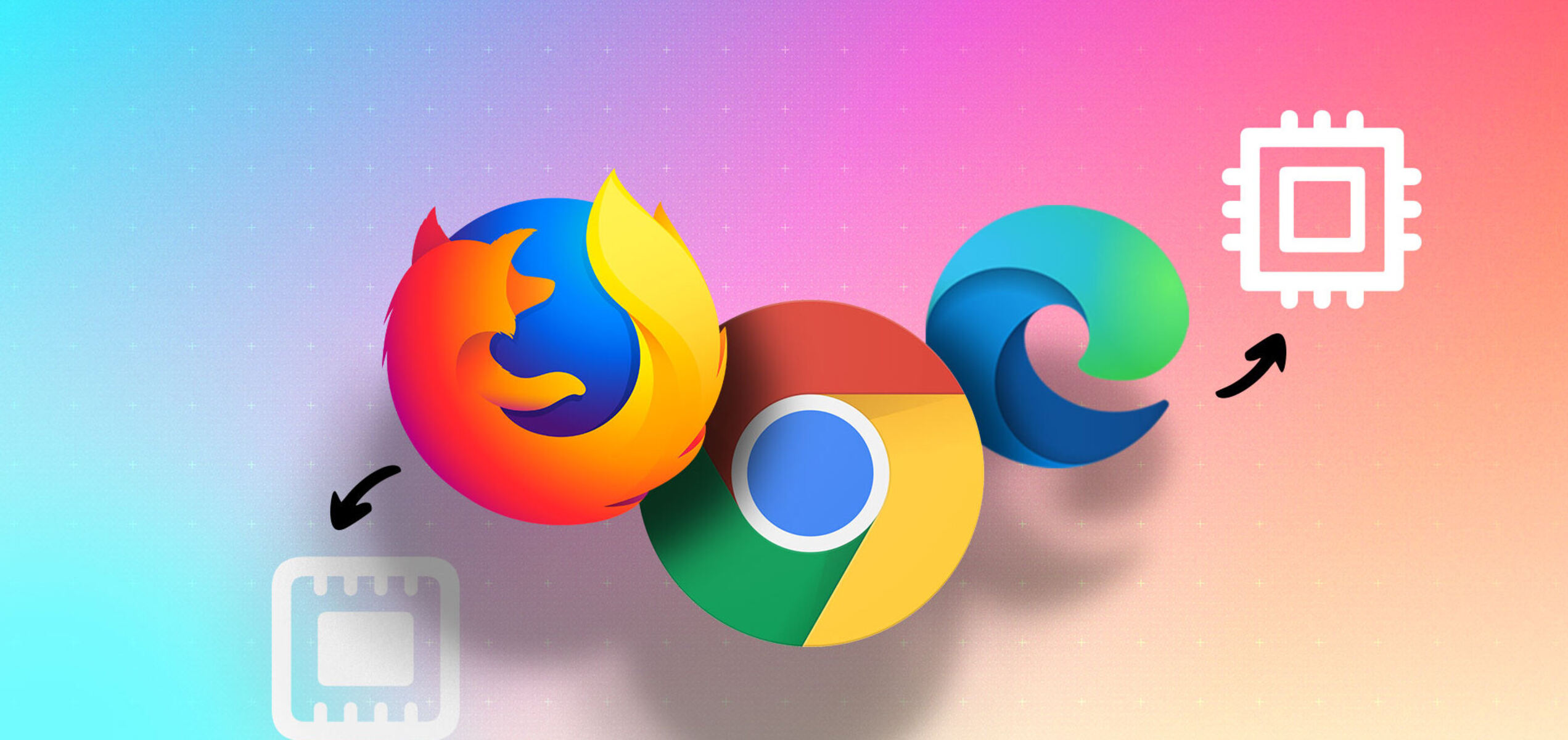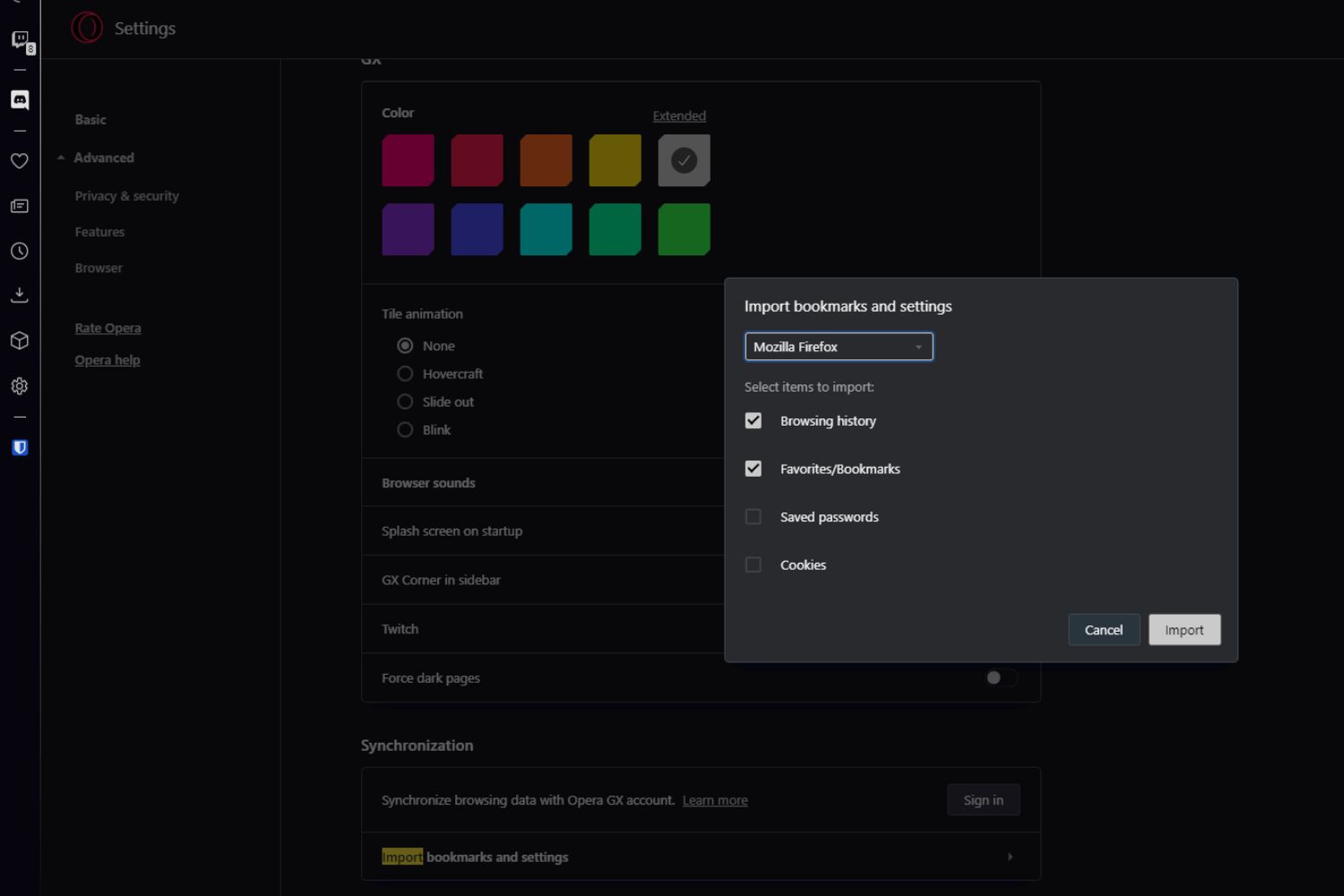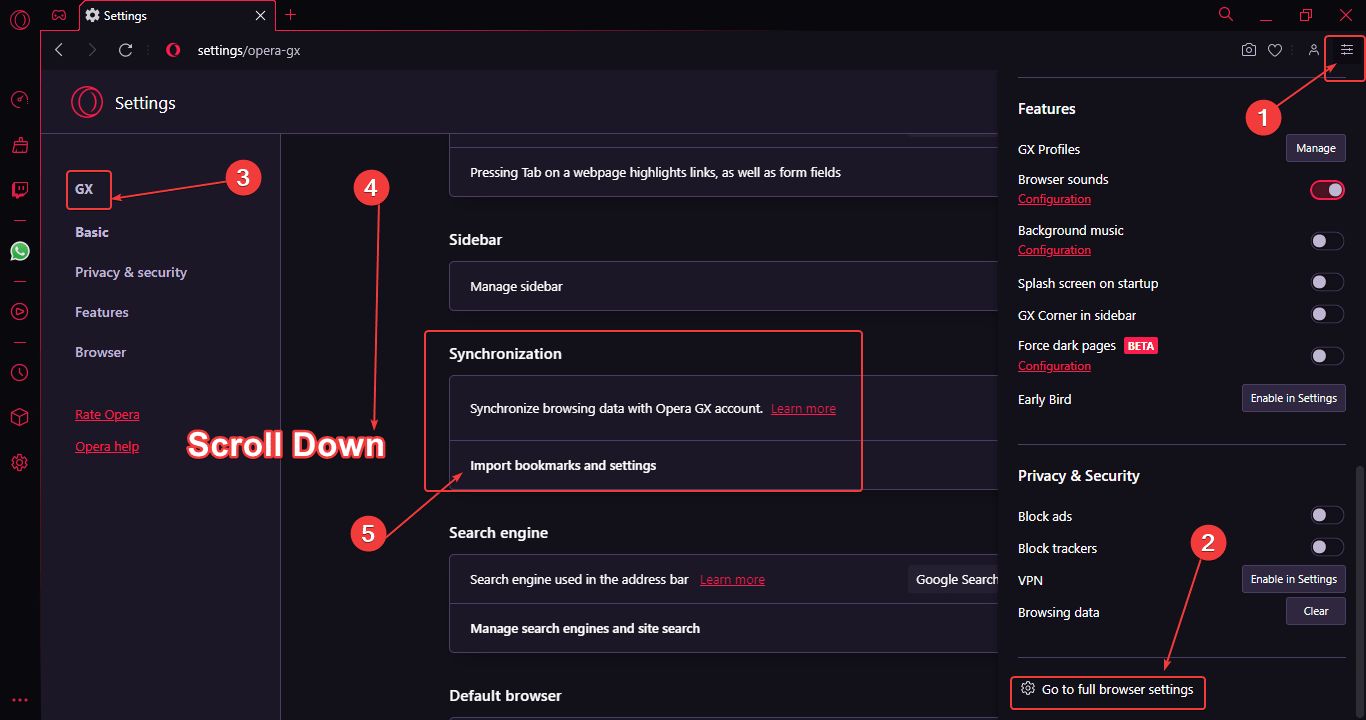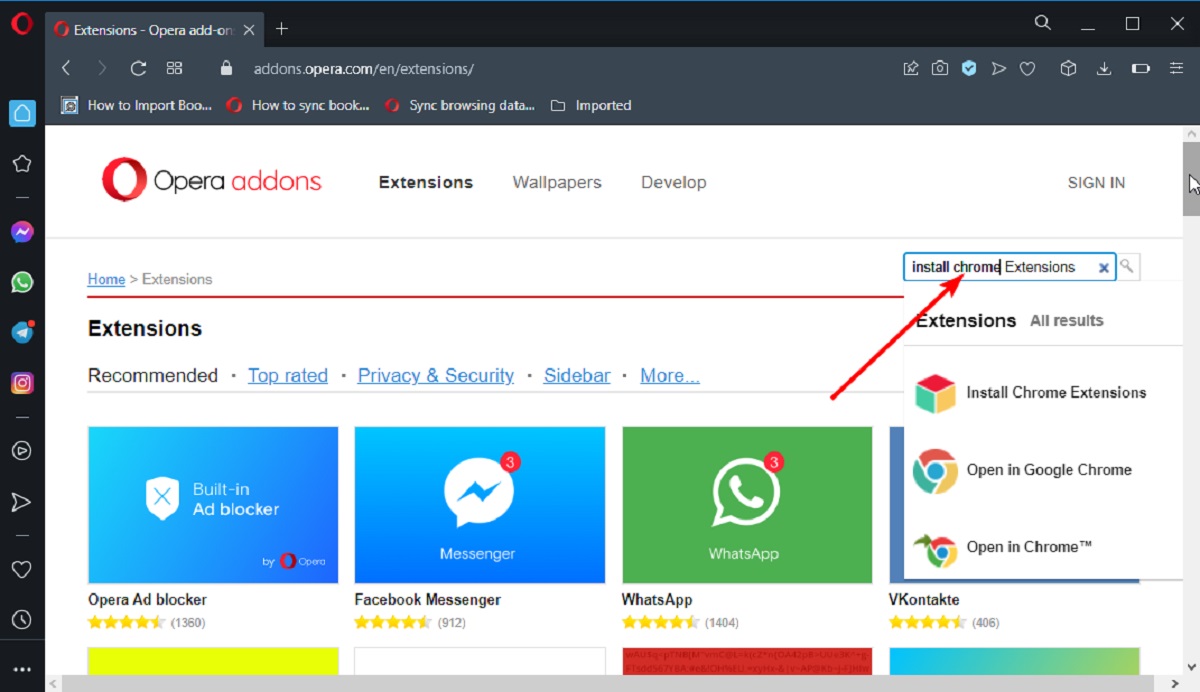Introduction
Are you experiencing slow performance or high memory usage while using the Opera web browser? If so, you may be interested in learning how to change the amount of RAM that Opera utilizes. By adjusting these settings, you can potentially improve the browser’s performance and reduce its impact on your computer’s resources.
Opera, like other web browsers, allocates a certain amount of RAM to store data and run processes. This allocation is based on default settings, which may not always be optimized for individual users’ needs or system configurations.
In this article, we will guide you through the process of adjusting the amount of RAM Opera uses. We will show you how to open the task manager to identify the current RAM usage, how to change Opera’s RAM allocation, and how to test the changes to ensure they are effective.
Before we begin, it’s important to note that altering the amount of RAM Opera uses can have an impact on its performance. Increasing the RAM allocation may allow Opera to run more smoothly, but it could also lead to higher resource consumption. On the other hand, decreasing the RAM allocation may free up resources but could result in slower performance.
It’s crucial to strike a balance between the browser’s performance and your computer’s available resources. With that in mind, let’s proceed to the first step: opening the task manager to identify Opera’s current RAM usage.
Step 1: Opening the Task Manager
The first step in adjusting the amount of RAM Opera uses is to open the task manager. The task manager is a built-in tool in most operating systems that allows you to monitor and manage the processes and resource usage of your computer.
To open the task manager in Windows, you can use the following keyboard shortcut: “Ctrl + Shift + Esc”. Alternatively, you can right-click on the taskbar and select “Task Manager” from the context menu that appears.
For Mac users, the process is slightly different. You can open the task manager by pressing “Command + Option + Esc” to bring up the “Force Quit Applications” window. From there, click on the “Activity Monitor” button to access the task manager.
Once you have the task manager open, you will see a list of running processes and their respective resource usage. Look for the Opera browser among the processes and take note of its current memory (RAM) usage.
By identifying Opera’s current RAM usage, you will have a baseline measurement to compare against after making the necessary changes. This will help you assess the effectiveness of the adjustments you make in subsequent steps.
Now that you know how to open the task manager and find Opera’s RAM usage, let’s move on to the next step: changing the amount of RAM Opera utilizes.
Step 2: Identifying Opera’s RAM Usage
Before making any changes to Opera’s RAM usage, it’s essential to have a clear understanding of how much memory the browser is currently utilizing. In this step, we will guide you on how to identify Opera’s RAM usage through the task manager.
To begin, open the task manager on your operating system. On Windows, you can do this by pressing “Ctrl + Shift + Esc” or right-clicking the taskbar and selecting “Task Manager.” Mac users can open the task manager by pressing “Command + Option + Esc” and clicking on the “Activity Monitor” button.
Once the task manager is open, locate the Opera browser among the list of active processes. The process may be labeled as “Opera,” “Opera.exe,” or similar. Take note of the memory or RAM usage associated with the Opera process. This will be displayed in megabytes (MB) or gigabytes (GB).
By identifying Opera’s current RAM usage, you will have a baseline to evaluate the impact of any changes you make in the subsequent steps. If you notice that Opera’s RAM usage is significantly high or causing performance issues on your system, it may be an indication that adjustments are needed.
Remember, Opera’s RAM usage may vary depending on the number of tabs open, extensions installed, and the complexity of the web content being loaded. Therefore, it is advisable to open Opera with your typical browsing behavior to get an accurate representation of its typical RAM usage.
Once you have noted down Opera’s RAM usage, you are ready to proceed to the next step, which involves changing the amount of RAM Opera utilizes.
Step 3: Changing Opera’s RAM Usage
Now that you have identified Opera’s current RAM usage, it’s time to make the necessary adjustments to change how much memory the browser utilizes. Follow the steps below to adjust Opera’s RAM usage:
- Launch Opera and type “opera://flags/#force-color-profile” in the address bar.
- Once you’re on the experiments page, click on the drop-down menu next to “Force color profile” and select “sRGB”.
- Next, open a new tab and type “opera://settings/system” in the address bar.
- Scroll down to the “System” section and click on “Advanced”.
- Under the “Performance” heading, you’ll find the option to “Limit the maximum memory usage”.
- Toggle the switch to enable this feature.
- Set the desired limit for Opera’s RAM usage by adjusting the slider. You can choose a value based on your computer’s available resources and preferences.
- Once you have selected your desired limit, close the settings tab.
By following these steps, you will be able to change how much RAM Opera utilizes. Keep in mind that setting the limit too low may result in decreased performance, while setting it too high may increase memory usage and potentially impact the overall system performance.
It’s important to find the right balance based on your specific needs and system capabilities.
Now that you have successfully changed Opera’s RAM usage, it’s time to move on to the next step: testing the changes to ensure they are effective.
Step 4: Testing the Changes
After making adjustments to Opera’s RAM usage, it’s crucial to test the changes to ensure they are effective and have the desired impact on the browser’s performance. Here’s how you can test the changes:
- Restart Opera to apply the new RAM usage settings.
- Open the task manager again and locate the Opera process.
- Observe the memory or RAM usage associated with the Opera process.
- Compare the current RAM usage to the baseline measurement you noted earlier.
- If the RAM usage has decreased or is within your desired limit, consider the changes successful.
- Continue using Opera as usual and monitor its performance. Pay attention to overall responsiveness, page loading times, and system resources consumption.
- If you experience improved performance and a decrease in memory-related issues, the changes have been effective.
- However, if you encounter any unforeseen issues or a negative impact on performance, you may need to revisit the RAM usage settings and adjust them accordingly.
Remember, the optimal RAM usage for Opera varies depending on your system’s capabilities and your browsing habits. It may require some trial and error to find the ideal balance between performance and RAM usage.
By thoroughly testing the changes, you can ensure that Opera operates efficiently while utilizing an appropriate amount of system resources.
Congratulations! You have successfully tested the changes to Opera’s RAM usage. Now you can enjoy a better browsing experience with improved performance and optimized resource utilization.
Conclusion
Adjusting the amount of RAM Opera utilizes can be a valuable step in optimizing its performance and ensuring efficient resource management on your computer. By following the steps outlined in this guide, you have learned how to identify Opera’s RAM usage, change the amount of memory it utilizes, and test the effectiveness of the changes.
Remember that finding the right balance between performance and resource usage is crucial. Setting Opera’s RAM usage too low may result in decreased performance, while setting it too high may lead to excessive memory consumption. It is important to consider your computer’s available resources and your browsing habits when making these adjustments.
Regularly monitoring Opera’s RAM usage can help you identify any issues and make necessary changes to ensure optimal performance. If you experience ongoing performance or memory-related problems, you may consider other performance optimizations, such as disabling unnecessary extensions, clearing browser cache, or updating Opera to the latest version.
With the knowledge gained from this guide, you are now equipped to fine-tune Opera’s RAM usage according to your preferences and system capabilities. Enjoy a smoother browsing experience with optimized resource allocation!







